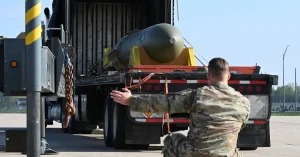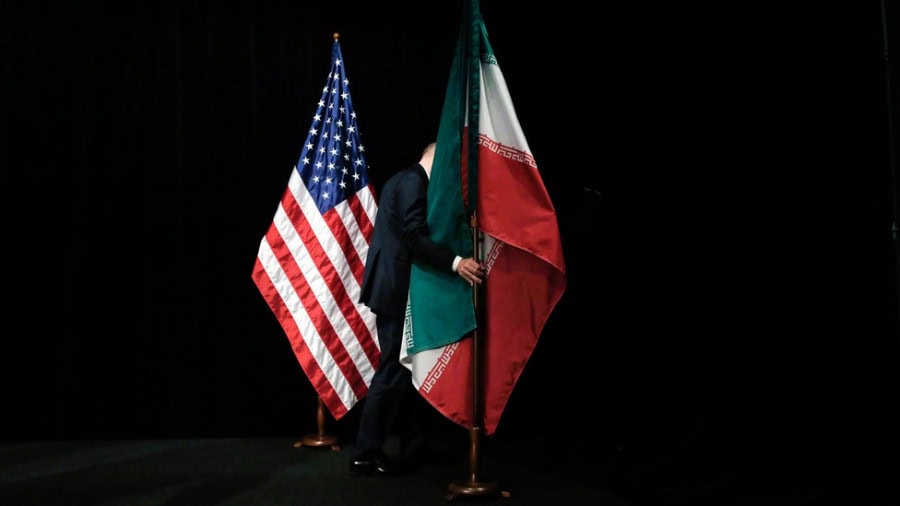ISLAMABAD – As tensions escalate over Iran’s nuclear program, recent developments have brought attention to a powerful bomb designed by the United States to target underground facilities. Are we on the brink of witnessing a US attack on Iran’s nuclear facility using the Massive Ordnance Penetrator (MOP) bomb?
The US Air Force recently unveiled rare images of the GBU-57, also known as the Massive Ordnance Penetrator, a bomb specifically created to penetrate deep into the earth and destroy fortified underground facilities. This release, however, was followed by the removal of the images due to sensitive details regarding the weapon’s composition and capabilities.

The Massive Ordnance Penetrator was developed in response to Iran’s growing concerns over its underground nuclear sites. With a weight of 12,300 kilograms (27,125 pounds) primarily attributed to its thick steel frame, this bomb is designed to effectively penetrate concrete and soil, posing a significant threat to underground bunkers.
While the US is ramping up pressure, Iran is also not lagging behind and reports indicate that Iran has been making steady progress in constructing a nuclear facility near the Natanz nuclear site in central Iran. Satellite imagery from Planet Labs PBC reveals excavation mounds, suggesting that the facility could be buried as deep as 80 to 100 meters (260 to 328 feet) underground. Such depth, coupled with the potential for uranium enrichment activities, presents a formidable challenge for any military strike.
While the US has previously showcased videos of the Massive Ordnance Penetrator in action, coinciding with rising tensions over Iran’s nuclear program, the recent release and subsequent removal of images indicate potential operational secrecy. Experts speculate that the US military may consider employing multiple MOP bombs in succession to ensure the complete destruction of the underground facility.
However, several factors complicate the possibility of a successful US attack. The increased depth of the Natanz tunnels poses a serious challenge to the Massive Ordnance Penetrator’s effectiveness. Additionally, the temporary grounding of the B-2 stealth bomber fleet since December, following an incident involving a fire during an emergency landing, raises questions about the available means to deliver such a powerful weapon.
As uncertainties loom over the future of US-Iran relations, the potential utilization of the Massive Ordnance Penetrator against Iran’s fortified nuclear facility remains a subject of international concern. The world watches closely, aware of the implications this conflict may have on regional stability and global security.
Another factor that can hinder the deployment of this destruction is the fact that Tehran is building ties with other powers most noticeably Saudi Arabia. The media optics reveal that Iran might be able to convince its former rivals to use their influence against the use of any bomb destined to annihilate its nuclear facilities.
As far as the announcement of the verdict is concerned, we don’t know but we know for a fact that a full-scale war doesn’t bode well for the Muslim world as well as the international community.
—The writer is Digital Editor at Pakistan Observer, and can be reached at
[email protected]










